Exploring Yes and No Cards in Divination
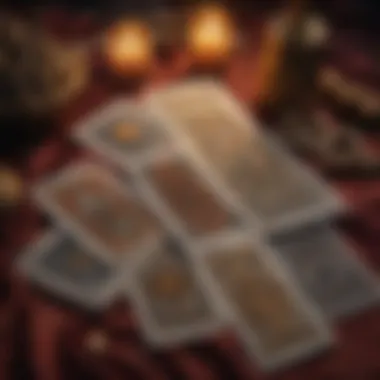
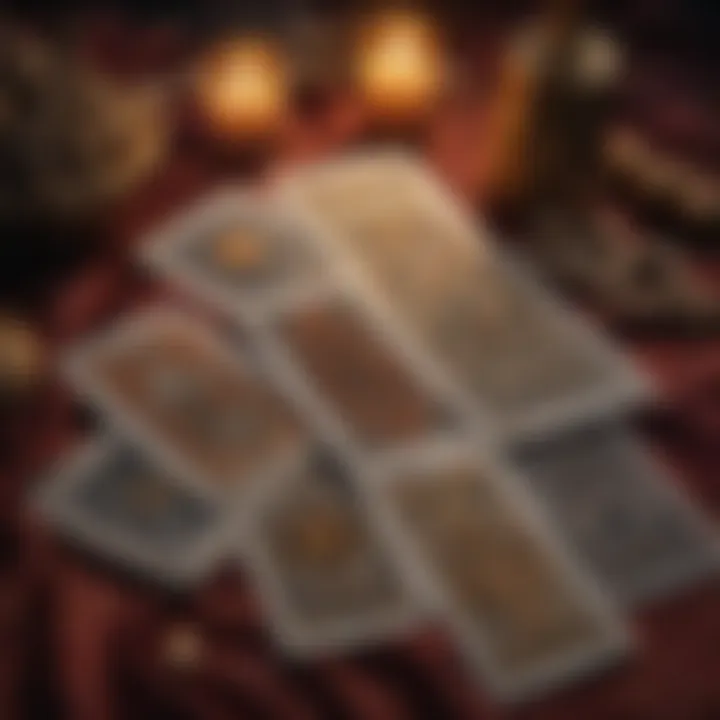
Intro
In the realm of divination, Yes and No cards hold a unique position. These cards offer direct answers to inquiries, making them essential tools for practitioners like astrologers, tarologists, and esotericists. They provide a straightforward mode of guidance, suitable for both beginners and seasoned individuals. Understanding the historical context and various methodologies for interpretation adds depth to their significance.
Yes and No cards can simplify complex questions, allowing users to gain clearer insights into uncertain situations. They can be paired with other cards or used independently. This guide seeks to explore their multifaceted nature, across numerous applications in divination, astrology, and tarot.
Characteristics of Each Zodiac Sign
When considering Yes and No cards, an interesting observation becomes clear: the personality traits associated with zodiac signs can influence interpretations and the way individuals approach inquiries.
Overview of Personality Traits
Every zodiac sign carries distinct characteristics. For example, Aries is often seen as bold and assertive, while Taurus may show persistence and a strong nature. Understanding these traits can enhance the effectiveness of readings.
Strengths and Weaknesses
Each sign comes with inherent strengths and weaknesses. Cancer, for instance, is known for emotional depth but can sometimes display moodiness. Recognizing these can assist readers in tailoring their interpretations to account for individual emotional landscapes.
Compatibility with Other Signs
Compatibility plays a role when interpreting Yes or No answers. For a Taurus asking about a relationship with a Leo, an understanding of both signs’ traits informs the response's nuances.
How to Interpret Tarot Cards
Yes and No cards often integrate with traditional tarot readings, enhancing their function and clarity. Understanding the core elements of tarot enhances the experience of using Yes and No cards.
Major and Minor Arcana
The Major Arcana signifies significant life themes. In contrast, the Minor Arcana deals with everyday matters. Knowing these can inform the weight of a Yes or No answer.
Meaning of Key Cards
Certain cards exhibit inherent yes or no qualities. For instance, The Lovers presents strong affirmations, while The Tower suggests negative connotations.
Sample Interpretations in Different Spreads
Using Yes and No cards in various spreads provides different layers of insight. A single card drawn alongside three other cards gives mixed messages, improving the clarity and depth of an inquiry.
Overview of Deck Styles
Deck styles vary and can affect readings significantly. Whether using traditional Rider-Waite-Smith or alternative decks, each style contributes its unique flair to the reading.
Popular Decks and Their Unique Features
Some decks, like the Osho Zen Tarot, emphasize enlightenment; others, like the Wild Unknown Tarot, spotlight nature imagery. Knowing a deck's context shapes the understanding of Yes and No answers.
Culmination
Understanding Yes and No cards requires exploring both their practical applications and the astrological backdrop that influences readings. By recognizing the multifaceted characteristics of zodiac signs, astrology, and tarot interpretation, both novices and experts can deepen their divination practices, unlocking greater insights into the mysteries of life.
Historical Context of Yes and No Cards
Understanding the historical context of Yes and No cards provides significant insight into their development and usage in divination. These cards are not merely tools for fortune-telling; their origins and evolution reflect broader trends in human belief systems and practices surrounding fate and decision-making. Their simplicity and effectiveness in providing direct answers have made them an appealing option for those seeking guidance. By examining their historical significance, one can appreciate how these cards have adapted over time and remain relevant in contemporary spiritual practices.
Ancient Practices and Beliefs
The concept of divination can be traced back to ancient cultures, where various methods were employed to communicate with the divine or to ascertain knowledge about the future. In many traditions, including those in ancient Egypt and Mesopotamia, simple binary systems existed. For instance, the practice of casting lots or stones was prevalent, providing yes/no answers based on the outcome of random events. Such methods laid the groundwork for more structured forms of divination, including the development of Yes and No cards.
In early belief systems, decisions were often seen as reflections of divine will. People sought answers from oracles, and yes/no responses were common. These responses were framed within larger contexts of fate and destiny. Ancient cultures believed that through divination, individuals could tap into cosmic knowledge, which guided their actions and decisions. This belief system continues to impact how Yes and No cards are viewed today, as tools not just for divination but for personal empowerment and introspection.
Evolution of Divination Methods
Over the centuries, divination has undergone significant evolution. With the advent of written language and more complex social structures, methods became increasingly sophisticated. Tarot cards emerged in the 15th century, adding layers of symbolism and storytelling to the practice of divination. However, the straightforward nature of Yes and No cards has persisted.
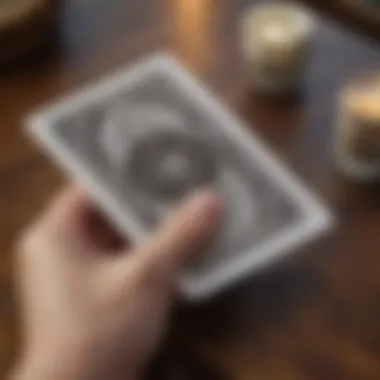
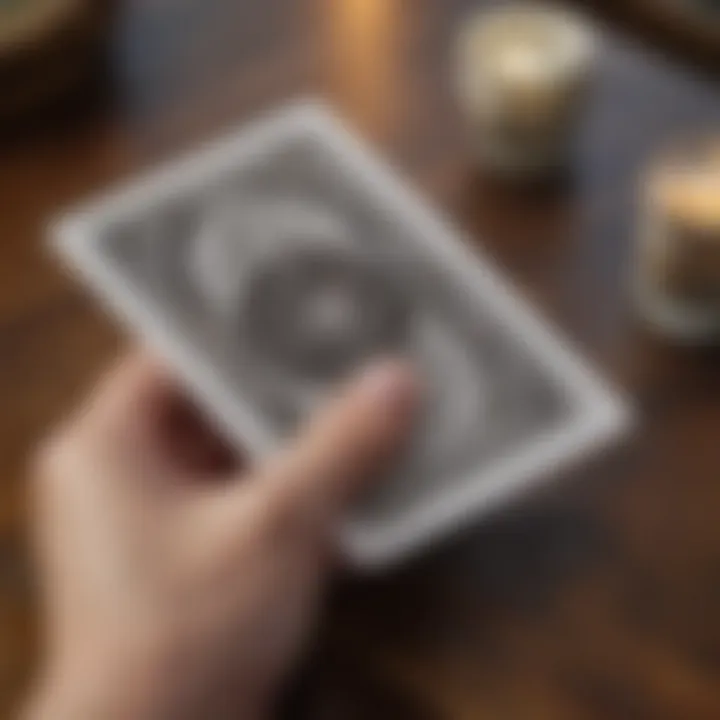
The rise of esoteric traditions in the late 19th and early 20th centuries saw a resurgence of interest in simpler forms of divination. The focus shifted from elaborate spreads of tarot to more direct question-and-answer formats. This evolution highlights a cultural desire for clarity in an increasingly complex world. Therefore, Yes and No cards have maintained crucial relevance in divination practices.
Understanding the Yes and No Cards
The understanding of Yes and No cards is crucial in the field of divination. These cards serve as straightforward tools for seekers who desire instant clarity in decision-making. The simplicity inherent in their usage stands in stark contrast to the complexities involved in traditional tarot readings. This simplicity is also what makes them approachable for beginners, while still offering value for more seasoned practitioners.
Definition and Purpose
Yes and No cards are a subset of divination tools characterized by their binary responses to queries. Unlike traditional tarot cards that encompass a range of meanings and interpretations, Yes and No cards focus on providing clear answers. They function on the principle of simplifying the decision-making process. For many, engaging with Yes and No cards can fulfill a need for immediate guidance in situations filled with uncertainty.
These cards typically consist of two distinct sections – one representing 'yes' and the other 'no'. Some decks may include additional nuanced responses, such as 'maybe' or 'not yet', enhancing the clarity of inquiries further. The purpose of these cards extends beyond mere fortune-telling. They can be used as reflective tools to prompt deeper consideration and intuition about life circumstances.
Differences Between Tarot and Yes/No Cards
The differences between Yes/No cards and tarot cards are significant. While both methods serve the purpose of divination, their methodologies and outcomes differ. Below are key contrasts:
- Complexity of Readings: Tarot readings often involve multiple cards and intricate spreads, offering nuanced insights. Yes and No cards provide a straightforward binary answer without extensive interpretation.
- Time Commitment: Engaging with tarot can require significant time to prepare, shuffle, and interpret cards. Yes and No card sessions are more immediate, allowing for quick answers.
- Interpretation Skill: Tarot demands an understanding of symbology and the relational meanings of cards. In contrast, Yes and No cards require less interpretative skill, yet still benefit from intuitive insights.
Ultimately, both methods serve valuable functions in divination but cater to different needs and preferences within the esoteric community.
"The beauty of Yes and No cards lies in their capacity to distill complex questions into clear responses."
As divination techniques evolve, understanding these foundational elements is essential for practitioners at all levels.
How to Use Yes and No Cards
Understanding how to effectively utilize Yes and No cards is fundamental for both new and seasoned practitioners of divination. These cards serve as tools for gaining insights into binary questions, allowing users to navigate complex decisions with clarity. The use of Yes and No cards can streamline the decision-making process and provide direct answers that resonate with the query at hand. It is important to appreciate the nuances of their application, as the manner in which one uses these cards can significantly affect the outcomes and interpretations.
Simple Methodologies for the Beginner
For those who are just beginning their journey with Yes and No cards, simplicity is key. A basic understanding of how to ask the right questions and interpret the outcomes is essential. Here are some guidelines:
- Choose a Quiet Space: Begin in a calm environment. This aids concentration and fosters intuition.
- Ask Clear Questions: Formulate a specific question that can be answered with a simple "yes" or "no." Ambiguous questions can lead to unclear answers.
- Use a Small Deck: For newcomers, it is advisable to start with a limited selection of Yes and No cards to reduce overwhelm.
- Shuffle and Draw: Shuffle the cards while focusing on the question. Draw one card to represent the answer.
- Interpret the Card: Familiarize yourself with basic interpretations of each card. Generally, cards interpreted as positive indicate "yes," while negative cards suggest "no."
This method lays a solid foundation for those new to divination, instilling confidence and encouraging exploration of deeper methodologies over time.
Advanced Techniques for the Experienced Reader
As you become more proficient in using Yes and No cards, you can begin to explore advanced techniques. These methods harness deeper intuitive insights, contextual readings, and experience in interpreting complex situations. Here are some advanced strategies:
- Multiple Cards for Context: Instead of drawing one card, consider pulling three. This addresses the question, contexts, and possible outcomes. For example, the first card represents the current situation, the second indicates obstacles, and the third highlights potential outcomes.
- Positioning Cards with Meaning: Create a spread where card positions have designated meanings, enhancing their interpretive layers. For instance, positions may represent past, present, and future regarding the question.
- Use of Timing: Incorporate astrological influences by noting the timing and celestial events. By evaluating significant planetary changes, readers can place added significance on their findings.
- Feedback Loop: Keep notes of past readings and their outcomes. This helps refine interpretive skills and builds a personalized understanding of the cards' meanings over time.
These techniques will continue to improve your skills and yield richer insights in your readings.
"The deeper the understanding, the more accurate the reading."
Incorporating these methods elevates the practice, allowing for profound engagement with Yes and No cards.
Interpreting Yes and No Cards
Interpreting Yes and No cards is a crucial aspect of their effectiveness in divination. Understanding the meanings behind each card and how context influences these meanings can greatly enhance the reading experience for both the reader and the querent. This section will explore significant elements, benefits, and considerations related to interpreting these cards.
Card Meanings and Symbolism
Each Yes and No card carries unique meanings and symbolisms that can reflect various aspects of life, decisions, and outcomes. The benefit of knowing these meanings lies in their ability to provide concise answers to complex questions. For instance, a card that typically symbolizes the answer "Yes" may also carry deeper meanings related to action, positivity, or movement. On the other hand, a "No" card might signify caution, withdrawal, or an indication to wait. Understanding these nuanced meanings allows the reader to provide more depth in their interpretations.
- Symbols associated with these cards often vary based on culture and practice, leading to a richer understanding. For example:
- The Fool: New beginnings and possibilities.
- The Tower: Change and upheaval.
Using these symbols effectively can guide individuals not only towards direct answers but also towards insight about their current circumstances.
Contextual Influence on Card Meaning
The context in which a card appears can significantly alter its meaning. This aspect is essential for those who practice divination. The question asked, the position of the card, and the surrounding cards can all shape the interpretation.
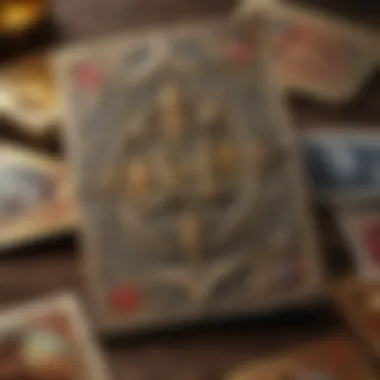

- Factors influencing context:
- Question: Simple questions yield more straightforward answers.
- Card Position: Cards can be placed in different positions for different meanings; for instance, a card in a past position might signify previous influences that can change the present outcome.
- Surrounding Cards: Cards sector can alter the tone of the reading. For example, a positive card next to a negative one might suggest a need for balance or caution.
"Context is as important as the symbols themselves; without it, interpretation can be misleading."
By recognizing these contextual influences, readers gain greater accuracy in their readings, which is vital for decision-making processes.
Incorporating both card meanings and contextual factors leads to a holistic understanding of Yes and No cards, enabling practitioners to deliver profound insights and guidance to those seeking clarity.
Common Misconceptions about Yes and No Cards
The realm of Yes and No cards is not immune to misunderstanding. These card divination systems are often oversimplified or misunderstood. The misperceptions surrounding them can influence how practitioners approach readings. By addressing these common misconceptions, we can enrich our understanding and use of Yes and No cards. Recognizing the depth of these tools can enhance their effectiveness, leading to more meaningful insights.
Myths Versus Reality
One pervasive myth is that Yes and No cards deliver absolute answers. Many believe these cards exist solely to provide binary outcomes. In reality, the cards offer a perspective rather than a definitive response. They guide readers to consider the nuances of a situation. Experts suggest that the interpretation of the cards should incorporate situational context. The energy around the question at hand can shape the answer. Thus, Yes and No readings are interpretive rather than prescriptive.
Another misconception is the idea that anyone can instantly master Yes and No card readings. While the basic principles may seem simple, expertise requires practice and skill. The ability to interpret cards meaningfully involves intuition, experience, and understanding. Practitioners often find that building competence in this area takes times and patience. Many aspects contribute to the reading process, such as focusing on energies and intentions.
Over-Simplification of Divination Techniques
The reduction of complex divinatory practices into overly simple terms can lead to confusion. For example, practitioners might focus too narrowly on yes or no responses, neglecting the richness of information that comes from additional context.
Key considerations to avoid over-simplification include:
- Card Combinations: The meaning of a card can change based on its surrounding cards in a spread.
- Emotional Context: The emotional state of the querent plays a critical role in any interpretation.
- Time Frame: The timing behind a question can add layers of meaning. A card drawn today may suggest a different outcome than if drawn tomorrow.
By acknowledging these factors, readers can appreciate the depth and complexity of their readings. Avoiding the pitfall of oversimplification enriches the practice, allowing practitioners to engage more fully with both the cards and the questions posed.
The Role of Intuition in Yes and No Readings
Intuition plays a significant role in the process of reading Yes and No cards. While techniques and structure provide a framework for divination, intuition guides the reader's interpretation and understanding of the cards presented. It allows a deeper connection to the energies involved, helping readers to feel confident in their insight.
The main benefit of intuitive guidance is that it enables a personalized reading experience. Each reader has a unique style, and their intuition can offer interpretations that structured systems may overlook. Moreover, acknowledging intuition enhances the overall reading process. It can shift the focus from mere card meanings to a holistic understanding of the situation being addressed.
Furthermore, the incorporation of intuition into Yes and No readings reflects the subjective nature of divination. Recognizing this can lead to a more fulfilling experience for both the reader and the querent. Intuition can help inform the context of the question, providing layers of meaning that enrich the reading and deliver more useful insights.
Intuitive Insights and Interpretation
Intuitive insights refer to the immediate impressions or feelings that arise as one interprets the cards. When engaging in Yes and No readings, a reader may sense an immediate response to a query through the energy present in the cards. This process can often happen instantly, with the reader tuning in to the querent’s emotions and intentions.
- Connection: Trust is essential. If the reader connects well with the cards and the querent, insights will typically flow more easily.
- Vibes: The reader should pay attention to their internal responses. Feelings or thoughts that arise during a reading can provide valuable clues.
- Fluidity: Unlike rigid interpretations, intuitive insights can evolve as the reading progresses. The initial meaning derived can shift based on the context or energy present.
To fully utilize intuitive insights, readers should practice mindfulness and create a space for reflection. This can involve meditative techniques or breathing exercises before commencing a reading.
"Intuition is the highest form of intelligence, transcending all individual abilities and skills."
Trusting One’s Gut
Trusting gut feelings during a reading is essential. Often, the first impression gained from a card can lead to crucial realizations. These instincts help validate the interpretations made during the reading. Developing this trust, however, can be challenging due to skepticism or external opinions.
To cultivate this trust, readers can:
- Practice Regularly: Frequent readings enhance intuition. The more one works with the cards, the stronger the intuitive channel becomes.
- Self-Reflection: After readings, reflect on decisions regarding interpretation. Evaluate what felt right or wrong and why. This self-assessment can reveal patterns in intuitive responses.
- Embrace Uncertainty: Accept that not every reading will have clear answers. Some situations need exploration rather than immediate resolutions. Trusting this journey is vital for personal growth and enlightenment.
In summary, the role of intuition is crucial in Yes and No readings. Those who refine this aspect can elevate their practice, offering deeper insights and tailored experiences.
Incorporating Yes and No Cards into Broader Practices
Incorporating Yes and No cards into broader practices enhances the overall effectiveness of divination techniques. These cards not only offer straightforward answers but also serve as a bridge to more complex systems such as tarot and astrology. Integrating them can provide nuanced insights and deeper meanings, allowing practitioners to expand their interpretive capabilities.
Simple yes or no decisions can often feel limiting. However, when these cards are placed within the context of tarot readings, they enrich interpretations. Integrating Yes and No cards with tarot allows readers to clarify potential outcomes. For example, a tarot spread may reveal intricate layers of a person's situation. By using Yes and No cards, a reader can distill that complexity into straightforward conclusions that assist in decision-making.
Combining with Tarot Readings
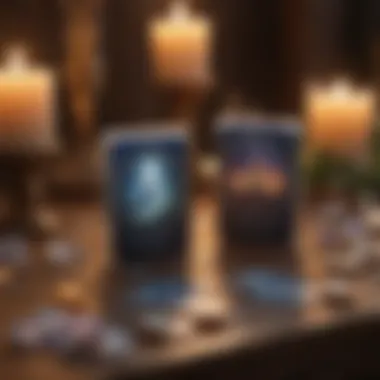
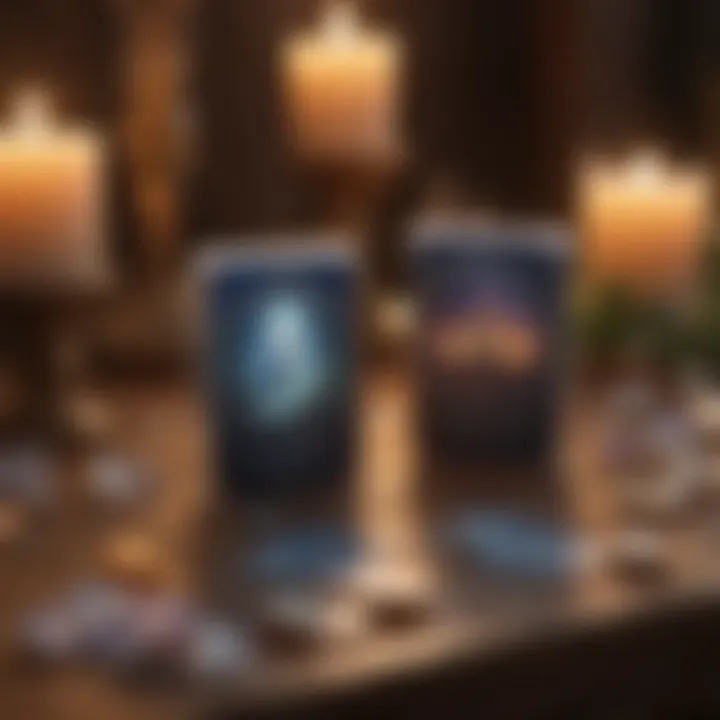
Combining Yes and No cards with tarot readings can sharpen focus and increase the clarity of outcomes. When tarot spreads feel overwhelming due to their depth and complexity, Yes and No cards can simplify conclusions without losing richness in meaning.
Thoughtfully placing a Yes or No card among tarot cards can illuminate the path of interpretation. This method can help delineate how different aspects of life may correlate, offering concise answers amidst layers of symbolic meaning. Practitioners often discover that such combinations bring forth a clearer picture of their queries.
For instance, if a tarot card displays a challenging situation but a Yes or No card answers in the affirmative, it may denote that while challenges exist, perseverance could lead to success. This method enables the reader to view the big picture while also focusing on pivotal decisions.
Integrating Astrology and Celestial Influences
Integrating astrology with Yes and No cards allows practitioners to assess the celestial influences on their queries. Astrological elements, such as planetary alignments or lunar phases, can introduce additional layers to Yes and No readings. For those interested in astrology, this fusion becomes especially powerful.
By examining the dos and don'ts of astrology, a practitioner can enrich their insights. For example, a Yes card during a waxing moon may indicate growth or a positive affirmation of a decision that encourages new beginnings. In contrast, a No during a waning moon might suggest caution or a need to release past situations.
Astrological aspects can also influence how practitioners interpret the cards. For instance, if Venus is in retrograde, a Yes card related to a partnership might be seen differently than when Venus is direct. This integration of celestial bodies and Yes and No cards offers readings greater depth.
In summary, incorporating Yes and No cards into broader practices like tarot and astrology is paramount for a holistic approach to divination. They streamline decision-making processes and serve as pivotal tools for enhancing clarity in complex situations. Leveraging these cards can guide practitioners towards intuition-driven decisions backed by deeper insights.
The Psychological Aspect of Yes and No Readings
The psychological aspect of Yes and No readings is crucial in understanding how these cards function within the realm of divination. It delves into the cognitive and emotional dynamics that influence and shape the experience of both the reader and the querent. The efficacy of Yes and No cards is not solely reliant on their traditional meanings or the reader's skill but also heavily depends on the perception and expectation of those involved.
User Perception and Expectation
User perception is what drives the interpretation of Yes and No cards. When individuals approach a reading, they often carry preconceived notions about the outcome. For example, a person asking about a job offer might hope for a "Yes" card, leading them to interpret the card's meaning in a positively skewed manner. This expectation can cloud judgment.
It's also important to note how readers frame the experience for their clients. The words used to describe the significance of the cards can impact how the querent perceives the overall reading. For instance, if a reader emphasizes the possibility of success, it may bolster the querent's confidence and lead to a more favorable view. Therefore, the mindset of the reader can create a more powerfule emotional response from the querent.
"Our perceptions shape our reality, influencing both the expectations of the readers and the feelings of those receiving the reading."
Impact on Decision-Making
Yes and No card readings also significantly inform decision-making processes. Individuals often seek guidance through these cards in moments of uncertainty. The readings offer a framework that helps clarify choices. A simple "Yes" may imply that one should proceed, while a "No" suggests reevaluation or taking a different path. Such decisions are rarely made in isolation; they are deeply embedded within the user's psychological context related to stress, confidence, and previous experiences.
The clarity provided by Yes and No cards can help alleviate anxiety and foster a sense of control. When faced with multiple pathways, the simplicity of a Yes or No answer can simplify complex emotional landscapes, making decision-making straightforward. However, it is essential to remain aware of the potential pitfalls, such as over-reliance on card readings for major life decisions. In such cases, it is prudent to combine these insights with practical thinking and advice from trusted sources.
Gathering Feedback from Readings
Gathering feedback from readings is an important aspect of practicing with Yes and No cards. It allows practitioners to assess the effectiveness of their techniques and gain insights into the decision-making process applied through the cards. This practice contributes to a deeper understanding of both the cards and intuitions involved. By documenting and analyzing past readings, individuals can identify patterns and make more informed choices in future sessions.
Documenting Readings for Analysis
Documenting readings involves creating a record of each session. This can be done through a journal or digital format. Key components to document include:
- Question Asked: Clearly state the question posed during the reading.
- Card Drawn: Note the specific cards drawn from the deck for that session.
- Interpretation: Write your interpretation of each card in relation to the question.
- Outcome: If applicable, record the outcome to see how it aligns with the card interpretations.
This structured approach ensures clarity and promotes accountability. Over time, patterns may emerge that provide further insight into the effectiveness of interpretations. Practicioners can return to these notes to refine their methods or adjust their understanding of the cards.
Learning from Past Experiences
Learning from past experiences can offer invaluable lessons to tarot readers and those using Yes and No cards. Reflection helps in recognizing what strategies work effectively. Consider the following:
- Analyze Successful Outcomes: When readings successfully predict outcomes, note the factors that contributed to this success.
- Identify Mistakes and Misinterpretations: Evaluate readings where outcomes did not align with predictions. Understanding these discrepancies is crucial.
- Adjust Techniques: Use this understanding to iteratively improve interpreting strategies and decision-making approaches.
Gathering feedback and learning from past experiences fosters personal growth within the context of using Yes and No cards. This reflective practice serves not only to enhance one’s skills but also to deepen the overall understanding of divination techniques. It connects the reader with their intuition and improves overall card reading effectiveness.
Culmination: The Future of Yes and No Cards
In the rapidly evolving landscape of divination, the significance of Yes and No cards remains notable. As societies shift towards a digital age, these cards adapt to meet the needs of contemporary users. This adaptability is crucial for their continued relevance. The future of Yes and No cards depends on how practitioners embrace technology, integrate new insights, and address the changing perceptions of divination.
Adapting to Modern Practices
Practitioners of divination must learn to incorporate technology into their methodologies. Many are turning to mobile applications and online platforms to reach a broader audience. Virtual readings provide accessibility that traditional methods sometimes lack.
By utilizing social media and online communities, practitioners can share insights and techniques. For those who have embraced technology, trends show that digital platforms can enhance traditional practices.
However, while adapting to new practices, keeping the essence of Yes and No cards is essential. This balance allows practitioners to stay true to the historical significance and purpose of the cards while modernizing their use.
The Enduring Appeal of Yes and No Divination
Yes and No cards possess an intrinsic appeal that resonates with users. Their simplicity offers clarity in decision-making. Many individuals seek immediate guidance, and these cards provide straightforward answers. Users appreciate their directness, contrasting with the often complex interpretations required by other divinatory tools.
Furthermore, Yes and No cards can act as a quick reference point in times of uncertainty. Their effectiveness lies within the framework of choice. They encourage users to introspect and evaluate their situations while relying on external guidance.







